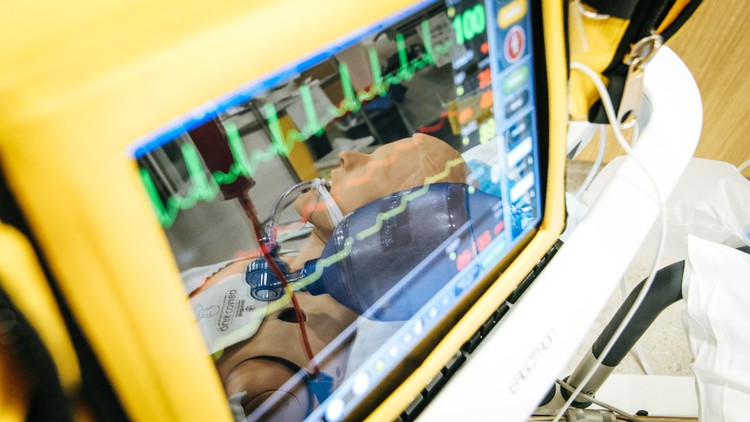
Learn core ACLS rhythms entirely online! Created by physicians and adheres to the latest ILCOR Standards and Guidelines.
What you will learn
Learn how to recognize and interpret core Advanced Cardiac Life Support (ACLS) rhythms
Be familiar with defining criteria and ECG features for each of the 15 core rhythms
Recognize and understand the clinical manifestations of each core rhythm
Understand pathophysiology for the most common ACLS rhythms
Description
This ACLS: Core ECG Rhythms and Interpretations course will teach participants how to recognize and interpret the 15 core Advanced Cardiac Life Support (ACLS) ECG rhythms. It will also overview normal heart anatomy and physiology. Understanding normal cardiac anatomy and physiology is an important component of performing ACLS. By understanding the normal electrical function of the heart, it will be easy to understand abnormal functions.
Advanced Cardiac Life Support (ACLS) will prepare you to respond to life-threatening emergencies in the adult population with advanced interventions. Designed by experienced providers in conjunction with board-certified physicians and veteran ACLS instructors, this course serves as an engaging and comprehensive approach to reviewing the core rhythms of ACLS practice. The course reviews the pathophysiology, defining criteria and ECG features, clinical manifestations, common etiologies, and ECG presentation for the 15 core rhythms, including ventricular fibrillation, accessory-mediated supraventricular tachycardia, and several atrioventricular blocks. This ACLS course is based on the latest guidelines which focus on doing several tasks simultaneously with a group process that enables efficiency and minimization of error.
The course package includes:
– ACLS Supplemental Study Aids
– ACLS Lectures and Video Presentations
– ACLS Supplemental Skills Training Videos
NOTE – This course is for training in Advanced Cardiac Life Support (ACLS).
Content